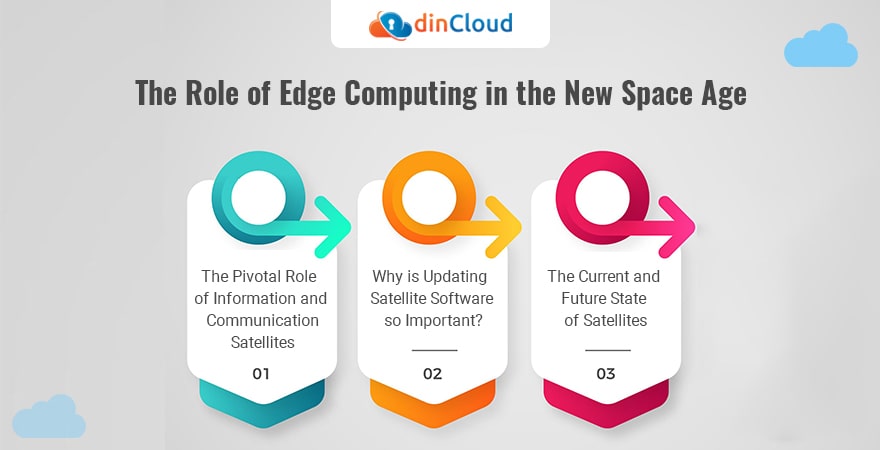Outer space has always fascinated humans living on the face of the Earth. This in-built urge within us humans to venture into the un-explored is what has resulted in many interesting discoveries over the course of our history.
Indeed, it was a landmark moment for all of humanity when the first human set foot on the moon. Ever since, we have made astronomical progress in space explorations, and the development of technologies that exist in outer space.
Related: Edge and Cloud Emerge as Complementary Technologies

The Pivotal Role of Information and Communication Satellites
Men’s venturing into outer space was more of a symbolic value. The actual ambitions of both men, and entire nations were to establish a strong footing on this Earth, by conquering the outer space.
This goal was just not possible without leveraging technology to the fullest. Whether its information, communication, transactions or any other operation, the infrastructure that has been established in outer space is playing a pivotal role towards this end goal.
Information and communication satellites are not only super expensive to build and launch into space, but also require continuous maintenance as well as software upgrades. Out in the space, physical space is not the limiting factor, as there is plenty of it over there.
However, the daunting challenge lies in the ability of the technical folk sitting down here on Earth to update, patch, or upgrade the software that is powering these multi-million dollar satellites. These upgrades are required for both security and performance reasons.
Related: Edge Computing Well Poised to Take a More Central Role
Why is Updating Satellite Software so Important?
Satellites are expensive pieces of hardware, which cannot be replaced every now and then. So, the whole idea behind them is to derive the maximum value and performance from the various satellites orbiting planet Earth.
This in turn is only possible by making enhancements to their software components. However, relaying these updates to the satellites in outer space is a challenge, especially in the context of data security and privacy.
This is a very crucial stage in satellite maintenance and if compromised, it can jeopardize the entire functionality of the satellite. Things can get even more complicated if the satellite in question is handling classified or sensitive information.
Some classical examples of the role of satellites in our day to day lives include the internet, weather forecasts and above all, communications. As the end users of these services on a daily basis, we always have a desire to enhance their speed, accuracy and privacy.
At the end of the day, it is actually the software that runs on these satellites which makes them agile and accurate. Without the cutting edge software systems, and their constant upgrading, these satellites are little more than a chunk of metal in the outer space.
Related: The Future of Edge Computing and the Problems it Solves
The Current and Future State of Satellites
According to an estimate, there are nearly 2,000 functioning satellites in the orbit right now. If you think this is a huge number, then sit tight. Over the coming few years, the total number of satellites orbiting planet Earth will reach a whopping 40,000.
To update, maintain and upgrade the software of such a large number of satellites, technologies like Edge Computing will play a very important role. Edge Computing will give satellites the capability to process more and more workloads locally.
So, this will eliminate the need for constantly upgrading the hardware aspects of the satellites, which is a very resource intensive undertaking. This major shift in how satellites work, will increase their useful lives to a great extent.
Related: Edge Computing and Internet of Things (IoT)
Conclusion
Technologies like Edge Computing, which handle bulk of the processing at the most localized tier, stand to transform the way how processes and workloads are handled by satellites in the outer space.
These ultra powerful satellites have the potential to unleash new horizons for us in outer space, of which we are oblivious right now. This is purely due to the capability of these satellites to gather, process and relay vast amount of data as well as information.
With the recent breakthroughs in space travel, coupled with the power of Edge Computing enabled satellites, we stand to find a lot more about our solar system, the universe, and the countless mysteries it has in store for us, or our coming generations.


